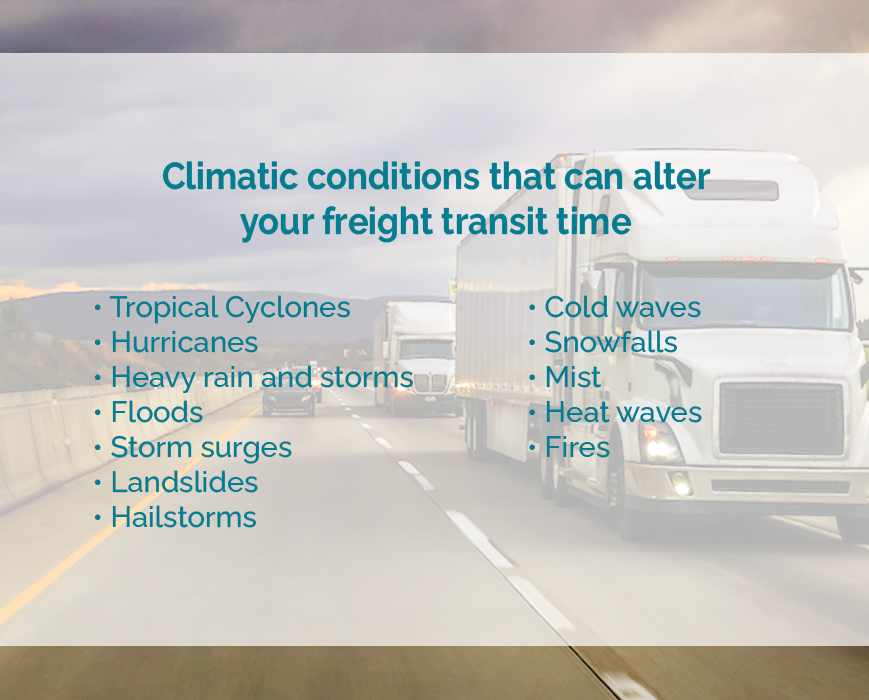Weather impact on freight transit time
Weather conditions have changed a lot in the last decade. Now, natural disasters happen more frequently and have gotten more severe. This has caused important damages to the road infrastructure which can enhance the possibility of delays in freight transit time.
The consequences of these disruptions on freight flow should represent an opportunity to test our resilience and learn to mitigate the effects on supply chains.
What natural disasters could happen on your freight transportation route?
Disruptions related to hydrological disasters are more damaging to the road infrastructure and freight transportation in North America. Floods, landslides, storms, blizzards, heat or cold waves, and fires might disrupt the route of your freight transit.
In countries like the U.S. and Canada, there are rules on the road according to the season in turn. For example: in both countries, drivers should use snow chains on roads covered with snow and ice during the winter, and there are limits for weight and speeds on roads due to thaw weakening in the spring.
However, since the weather in Mexico is mostly tempered during the whole year, these regulations are not mandatory.
Potentially disrupting climate events

* For more details about these regulations, you could check our blog post on the subject.
What happens when the transit time of my freight is disrupted?

We have a blog post where we explain how to calculate the transit times for southbound loads, you can check it out and look out for weather reports on the route. You can also consider that if there are any adverse conditions, the costs and delivery times might change up to three days.
Mexicom Logistics has the capacity of adjusting the delivery times when the road is open again.










Transit time is how long it takes for a shipment to be delivered to its final destination after being picked up from a designated pick-up point.